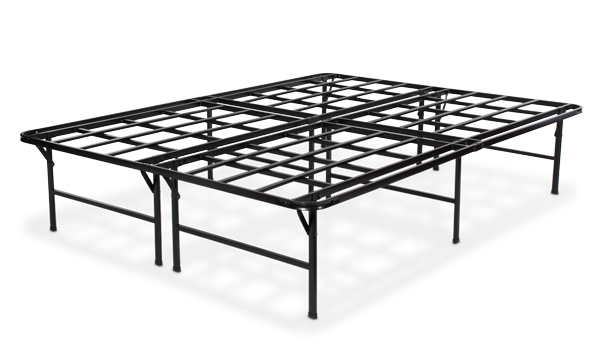Introduction
Often overlooked yet vital for a good night's sleep, the choice between a box spring and a foundation can make or break your sleep experience.
As more people invest in their sleep, the question of 'box spring vs foundation' becomes increasingly prevalent. In this comprehensive guide, we'll explore the unique characteristics of both to help you make an informed decision.
Unpacking the Basics: Box Spring vs Foundation
Box springs and foundations, while seemingly similar, offer distinct features that cater to different needs. Though both serve as excellent bed bases, enhancing your bed’s performance, they differ in construction, compatibility, and overall feel.
Box Springs: The Traditional Choice
Box springs are a classic bed base, consisting of a wooden frame housing a layer of steel coils, all topped with an anti-skid fabric. This unique construction promotes airflow and provides robust support, while the coils serve as shock absorbers, reducing motion transfer.
Ideal for innerspring mattresses, the box spring's give ensures an even weight distribution, preventing sagging. However, heavier mattresses like memory foam or latex may compromise the coils' integrity, leading to potential sagging.
Foundations: The Modern Contender
On the other hand, a mattress foundation is essentially a wooden box with wood slats across the surface, usually covered by a breathable fabric. Foundations prioritize support over give, which may result in a firmer sleep experience. The spacing between the slats — typically between 2 and 2.75 inches — determines the support level. Foundations are sturdy enough to bear the weight of heavy latex, memory foam, or hybrid mattresses, making them a versatile choice.
Bed Foundation vs Box Spring: The Pros and Cons Showdown
Every bed base comes with its set of pros and cons, and understanding these can help you find the perfect match for your mattress and your sleep needs.
Box Springs: The Good and the Bad
Box springs rose to fame alongside traditional innerspring mattresses. Their coil-based design promotes airflow, enhances breathability, and acts as shock absorbers.
However, they are not without their drawbacks. Springs can break down over time, potentially leading to noise and sagging. Furthermore, box springs are not compatible with some mattress types, particularly heavier ones such as memory foam or latex mattresses.
Foundations: Strengths and Weaknesses
Foundations are becoming increasingly popular, especially with the rise of latex and memory foam mattresses. They are compatible with most mattress types and are known for their durability and strong, even support.
However, they are generally heavier, which can make moving them a challenge. Their firm surface also lacks give, which may create pressure points for some sleepers.
The Core Difference between Box Spring and Foundation
At their core, both box springs and foundations serve as reliable bed bases. They increase the height of your mattress, facilitating ease of getting in and out of bed, which can be particularly beneficial for those with back or knee pain. However, their differences lie in their construction, feel, and compatibility with different mattress types.
Mattress Foundation vs Box Spring: A Comparative Snapshot
- Support: Box springs provide a supportive yet bouncy base, while foundations offer firmer, more robust support.
- Durability: Springs in box springs may be prone to wear and tear, resulting in potential noise and sagging. Foundations, being more solid, typically last longer.
- Weight: Foundations tend to be heavier than box springs, which could complicate transportation.
- Compatibility: Box springs are best paired with innerspring beds, while foundations are versatile, compatible with memory foam, latex, hybrid, and even innerspring beds.
- Average Price (Queen size): Box springs tend to be more affordable, ranging from $100 to $300, while foundations can cost between $200 and $500.
Conclusion
Choosing between a box spring and a foundation depends largely on your mattress type, personal comfort preferences, and budget. By understanding the differences, pros, and cons of each, you can ensure you make a decision that will enhance your sleep quality and prolong the life of your mattress.
After all, a good night's sleep is about more than just a mattress — it's about the whole bed system working together to provide the best comfort and support possible.

- Supports up to 1,000 lbs.
- Easy assembly.
- Lifetime warranty.
- 101-night sleep trial.
- Free shipping and returns.












